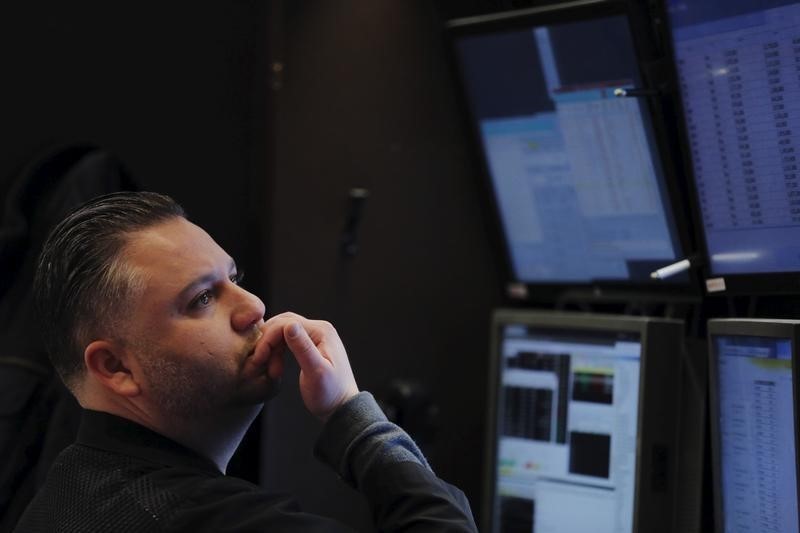
In the recent Q3 earnings call, Castellum (ticker: CAST), a prominent real estate company, revealed a steady increase in net operating income and income from property management. CEO Joacim Sjoberg announced a 3.9% rise in net operating income and an 11.7% increase in income from property management.
Despite a slight uptick in vacancies and negative net leasing, Castellum maintains a stable tenant quality and a solid financial position, with a loan-to-value ratio of 36.6% and cash reserves totaling SEK 29 billion. The company’s asset value as of September 30, 2023, stands at SEK 155 billion, primarily concentrated in Nordic metropolitan areas.
Key Takeaways
- Net operating income up by 3.9%; income from property management rose by 11.7%.
- Asset value at SEK 155 billion, with 74% in Nordic metropolitan regions.
- Negative net leasing of SEK 10 million, excluding a significant logistics project.
- Moody’s (NYSE:MCO) upgraded credit outlook to positive; successful EUR 0.5 billion Eurobond issuance.
- Aims to install 100 more solar panel systems by 2030; 64% of portfolio certified for sustainability.
- Strong financial position with a loan-to-value ratio at 36.6% and SEK 29 billion in cash reserves.
- Anticipates a stronger Swedish economy by 2025.
Company Outlook
- Castellum plans to invest a minimum of SEK 2.5 billion annually, with potential for more based on market conditions.
- The company projects being net investors moving forward, increasing portfolio value.
- Anticipates stability in the average cost of debt influenced by underlying interest rates.
Bearish Highlights
- Slight increase in vacancies and negative net leasing reported.
- Rental market more cautious in major capitals; summer optimism has faded.
- Rental market dynamics show high rents in central business districts as a concern.
Bullish Highlights
- Strong local demand for the Gladan project in Stockholm.
- Committed to sustainability with a significant portion of the portfolio certified.
- Moody’s credit outlook upgrade and successful Eurobond issuance indicate investor confidence.
Misses
- Excluding a significant logistics project, Castellum faced negative net leasing of SEK 10 million.
- A slight quarter-on-quarter drop in occupancy rates, though the company remains hopeful.
Q&A Highlights
- CEO Joacim Sjoberg addressed concerns over high rents in CBDs, noting Castellum’s diverse asset range as a mitigating factor.
- Sjoberg emphasized funding immediate cash flow projects with available cash to avoid over-leveraging.
- Jens Andersson spoke on financing cost stability and the gradual increase in tax rates on property management income.
- Andersson confirmed plans to reduce unutilized credit facilities after re-entering the Eurobond market.
In summary, Castellum is navigating a cautious market with a strategic focus on financial stability and sustainability. The company is leveraging its strong cash position to invest in new projects and improve its portfolio, while carefully managing risks. With a positive credit outlook and plans for continued investment, Castellum is positioning itself for growth in anticipation of a stronger economy in the coming years. The next earnings report is scheduled for February 19.
Full transcript – Castellum (CAST) Q3 2024:
Christoffer Stromback: Good morning, everyone, and welcome to this presentation of Castellu’s Q3 report. My name is Christoffer Stromback, and I’m Head of Investor Relations here at Castellum since the beginning of this year. Please feel free to contact me at any time should you have any questions. There will be a Q&A session at the end of the webcast. [Operator Instructions] Let’s start. Please go ahead. Joacim.
Joacim Sjoberg: Thank you, Christoffer. Hello, everyone, and good morning. This is Joacim Sjoberg, I’m CEO of Castellum. First, let me give you a very brief introduction to those of you who don’t know us that well. We are one of the largest listed property companies in the Nordic region. We are a fully integrated company with local hands-on presence where our assets are located. The property portfolio is in attractive growth regions in the Nordics, and we’re exposed to the robust market in Norway by Entra, which is an associated company. You can see on this map the location of our property portfolio. As of last of September, our asset value sums up to SEK 155 billion including our share in Entra. Of those SEK 155 billion over 74% is located in the Nordic metropolitan areas — meaning urban areas with at least 1 million people. And the remaining is in growing regional cities in Sweden. We have a yearly contract value of approximately SEK 9.5 billion. So, summary of the year so far. We have an overall stable result. Our net operating income is up 3.9% and the income from property management is up 11.7%. We will look into these figures in more detail later in the presentation. Our net leasing for the period is negative after two quarters with positive net leasing, the net leasing does not include the net leasing of 45,000 square meters logistic project in Gothenburg, which we are developing in a joint venture with the harbor of Gothenburg. We own the joint venture 50-50 and hence, it will not be included in our consolidated figures. We have continued to sell nonstrategic properties. The proceeds will be used for new investments. We will also come back to this, but I want to highlight that this should be seen as a streamlining of our portfolio and not strengthening of the balance sheet, in particular. So, some recent events. In August, Moody’s announced strengthening our credit rating when adding a positive outlook to our Baa3 rating. The change to positive outlook reflects the continued good operation and the financial performance that we have been very focused on over the last quarters. On the back of Moody’s positive outlook, we decided to enter the — re-enter the Eurobond market with a new bond of EUR 0.5 billion. We had a very strong interest, the largest demand ever for a Nordic real estate company according to our advisers, and the maturity is — was 6.25 years, and the credit margin was 175 basis points. We also bought back Eurobonds with shorter duration with a total nominal value of EUR 186 million. Sustainability is at the core of everything we do. And earlier this year, we reached our target of 100 solar panel systems which was intended to be reached by 2025. So, we reached two years in advance. And now we have set new targets being an installation of a further 100 solar panels by 2030. As mentioned, one of our leasing activities, the signing of a rental agreement with OneMed for a logistics project in Halvorsäng in Gothenburg. This is the joint venture with Gothenburg Harbor that I mentioned earlier, and we have the capacity to develop further projects at the same location. Briefly about our tenants. Our tenants represent a cross-section of Nordic business and authorities, and our exposure to individual tenants is very low. Our 10 largest tenants represent less than 15% of our total contract value and no tenant generate more than 2.5%. We have a strong tenant base. Many of our larger tenants being publicly funded operations, 25% of our total contract value stems from public sector tenants and the largest is the Swedish Police Authority. And as of last of September, the remaining average length of our contract was 3.7 years. So, very briefly, our P&L. Jens will cover this in greater detail, but from a helicopter perspective, the total income increases — we — the divestments affect our income negatively. We have reduced property costs. We have reduced admin costs. We have a lower debt volume, thus lower interest costs. Summing up, we report income from property management up 11.7% compared to last year. So, Jens will walk you through this on the following slide. Over to you, Jens.
Jens Andersson: Hi, everyone, and thank you, Joacim. Stable quarter with no significant changes or new one-off effects. Vacancies are still increasing, however, at a slower pace compared with the first two quarters. Transactions continue to boost loan to value, though reducing NOI growth. Still 3.9% for the period. Looking at development of operating income during the period and excluding the insurance compensation in Finland, the like-for-like portfolio income increased by SEK 78 million equivalent to 2.8%. The change in the like-for-like portfolio is mainly driven by indexation amounting to SEK 303 million or 5.3%. For the like-for-like portfolio, the direct property costs decreased by SEK 30 million, equivalent to minus 1.9%, of which electricity costs decreased by 115 million. As many of you already know, this is due to unusually high electricity costs earlier last year. Excluding one-off effects, the electricity cost like-for-like increased by 7%, equivalent to SEK 83 million. Tariff bond costs for water and heating continue to increase though passed on to our tenants to a large extent. Regardless, we keep a strong focus on our energy projects. Central and administrative costs were reduced by SEK 101 million, excluding SEK 63 million in one-offs from last year. The remaining SEK 38 million is due to a reduced headcount and general and continuing cost review. Negotiations corresponding to an annual rent of SEK 293 million, which translates to 15.5% of total lease stock up for negotiation well conducted during the period with an average positive change in rent of 1%. Additionally, contracts with an annual rent of almost SEK 1.2 billion were extended during the period with no change in terms, equivalent to 63%. Looking at leasing activity, we are reasonably satisfied with the gross leasing in extent the effort to create new business though the highest termination rate hit us harder than earlier and resulting in a net negative leasing of minus SEK 10 million for the period. Economic occupancy rate only down with 0.1 point during the quarter and for office unchanged since March. Bankruptcies still low, SEK 22 million for the period and tenant quality seem to be very stable and outstanding receivables are low and decreasing compared to the same period last year. Looking at rental income and net leasing. This is an old slide, but it’s worth to mention it again. And when we look at net leasing over a longer time period, it continues to be volatile on a quarterly basis. Income, on the other hand, is much more stable and increasing over time, however, affected negatively by two years of divestments and the general slowdown in the economy. I’ve said this before, but it’s worth mentioning again, it is clear that we have been holding back on new projects since 2022, hence net leasing mainly derived from existing properties rather than new projects which has been a strong driver of net leasing in the past. Joacim will tell you more on the topic of new projects later in the presentation. Looking at property values.During the period, Castellum’s written down property values with approximately SEK 1.6 billion, equivalent to 1.2% minus. The value changes during the period is mainly driven by cash flow expectations. However, only looking at the third quarter, the change in property values were close to neutral, perhaps a signal that property values have bottomed out. Valuation yield is still in line with year-end at 5.62% and also seems to have stabilized. Property sales continue to confirm our book values. Jumping into highlights financing for the third quarter. Loan-to-value now at 36.6%, down by 0.8% during the year despite a slight downward pressure on property values. ICR at 3.3x expected to be relatively stable around this number going forward. Average interest currently at 3.4%, up by 0.4% during the quarter. The increase during the third quarter is driven by expiring interest swaps with low fixed coupon and also the new Eurobond issue at 4.1% combined with the tender of a short European bond running at a fixed interest rate of 0.75%. And as Joacim mentioned, we have also received a positive outlook from Moody’s, which is very positive for us. Jumping into debt maturity structure and also already mentioned by Joacim because it’s very important for us that the Eurobond market has opened up at reasonable terms and we will come back and issue more Eurobonds next year, and it’s also very confident to see that we can reach and issue bonds with an expiry of 6 years from now. No bank loans refinanced during the quarter, though terms continue to improve regards price and offering of longer duration, close to SEK 29 billion of cash and unutilized credit facilities available at the end of the quarter and we will gradually reduce the RCF volume going forward. All in all, a very good financial position for Castellum. Over to you, Joacim.
Joacim Sjoberg: Thank you, Jens. So, looking at our projects, we have 9 larger ongoing projects, and that means projects that are larger than SEK 50 million, it’s a mix of the metropolitan areas and regional cities. As you can see from the list, the average occupancy rate is 91%. And the rental value of the ongoing projects is SEK 181 million, and the average lease duration is approximately 13 years. Just a few words about the two projects on the pictures, Tusenskönan two in Mölndal, I’ve mentioned this before, but it’s a new construction of a fully let veterinary hospital. And the second picture below is Gullbergsvass. It’s a project on behalf of Scandic Hotel at Lilla Bommen in Gothenburg. It’s an existing office space and now being converted into a new hotel, creating a vibrant area in the middle of Gothenburg.Another project that I’d like to mention is Gladan in Stockholm, the only of our ongoing project that is not 100% rented. That is a multi-tenant project, where client demand always comes closer to completion, but we see a strong local market for such a product. Looking at what we’re doing on the transaction side, we’ve invested almost SEK 1.6 billion so far this year. Almost everything is in projects that includes new construction as well as extensions and reconstructions. The SEK 1.6 billion is split approximately half in larger projects and half is CapEx or tenant improvements. We continue to sell nonstrategic properties. We’re thereby streamlining the portfolio. No particular desire to further strengthen the balance sheet by selling but it will continue to strengthen itself, the balance sheet that is through our operations. Proceeds will be used for new investments and we are constantly trimming the portfolio. Assets, markets and allocation will vary over time, and we will constantly monitor where we will create long-term shareholder value. However, we aim for an increase of the portfolio value and project that we will be net investors going forward. A few words on our sustainability performance. We work towards clear sustainability targets in the short and the long term to continue our sustainable development. We are actively engaged in reducing our climate impact through enhancing energy efficiency and that was the energy efficiency was minus 2.3% in the like-for-like yearly normalized way we measure. We have a continued focus on sustainability certified buildings and 64% of the portfolio was sustainability certified at the end of the third quarter. As mentioned earlier, we also invest in solar power and we have prolonged — extended the 100 on solar project to include another 100 solar panel systems by the end of 2030. This is a good investment both from a sustainability point of view, and it’s also very profitable with a margin return of 8% to 10% on the solar investments. So, just summarizing, it’s important to safeguard the cash flow by retaining tenants and to fill vacancies. The rental market is stable in our regional cities, but still a bit more cautious in the capital Stockholm, Helsinki and Copenhagen. Some of the summer optimism has faded now when we move into winter, but we have increased our focus on new investments both on projects and acquisitions because we have a solid financial position, a strong underlying business and feel comfortable that 2025 will be a stronger year for the Swedish economy. So, with that and with a picture from the interior of our office project, Erskin and France in Stockholm, I leave the floor open for questions.
Christoffer Stromback: Thank you. [Operator Instructions] And the first question comes from Lars Norrby at SEB.
Lars Norrby: Good morning, all three of you. Just sort of question tied to. I think you mentioned something about the summer optimism saving or something like that. Is it the case today compared to, let’s say, three months ago? That the lifting market is a bit more challenging. Is that the right reading?
Joacim Sjoberg: No, I would say rather that the optimism that we felt at the end of summer has perhaps not materialized in the way that we foresaw. So, I wouldn’t say that the market is more challenging now than it was in August but the aspiring optimism that we felt has perhaps not materialized in the way that we predicted.
Lars Norrby: Okay. So, the market situation, if anything, is pretty much unchanged compared to, let’s say, when you rolled out your second quarter report.
Joacim Sjoberg: I’d say so, yes.
Lars Norrby: Okay. And then second question, which is then I’d like to ask you about the start button you’re mentioning in the CEO statement shifting into growth mode, as I put it. I think, one, you — in some sense, you pushed the start button by starting that project or announcing that project in Gothenburg with OneMed. So, looking forward, is it very much dependent on you being able to sign new leasing contracts in order to grow through projects? And if you cannot do that at the pace that you’re hoping, are you more prone to go for acquisitions in that case?
Joacim Sjoberg: I would say we’re still focusing on development of our existing portfolio because that will give us both a better yield on cost and we also have a higher certainty in our operation when we already have the asset at our ends. However, we are dependent on a market being able to absorb project, so we are focusing on that. But we are also looking a much higher degree now on investment spanning on the market. So, we have only made smaller acquisitions in terms of land but we will be reviewing whether we should increase our volume by adding also standing assets to our portfolio.
Christoffer Stromback: Thank you, Lars. The next one is Nadir Rahman from UBS.
Nadir Rahman: Hello, good morning. Can you hear me clearly?
Christoffer Stromback: Yes, we can.
Nadir Rahman: So, the first question is on the negative re-lettings. So, obviously, as you mentioned in the presentation, there’s a downward trend now in Q3, which I guess could be due to volatility. But the first question is, going forward into Q4 and then perhaps into 2025 as well, could you provide some guidance as to what a realistic target or direction of travel could be for this figure? And my second question is on you becoming a net investor going forward. Could you provide a time frame, perhaps would that be in the first half ’25, or later than that? Do you have any insights and guidance on where that investment could begin?
Joacim Sjoberg: Well, the first one on guidance on net letting. We, of course, will aim at being a net positive every quarter. We do feel, however, that there is a pressure, especially in the metropolitan markets, which we cannot ignore. So, it would be wrong of me to promise. I did that a quarter in 2023. I will not repeat that mistake. So, — but we aim definitely at being a net positive. When that will happen is partly due to what happens, especially in the Swedish economy. So, I don’t think we should make too much of a promise. In terms of our net investments, our goal is definitely to be net positive on the investment side already in 2025. And that will be mainly us investing in existing projects but it may also be from, as I mentioned, to Lars Norrby earlier in acquisitions of standing assets.
Nadir Rahman: Got it. Very clear. And one final question on the debt situation. So, it’s good to see the leverage starting to tick down. Could you provide some guidance on the average cost of debt going forward? And given there’s a number of refinancings, I guess, to be done not in this quarter, but going forward, could you provide some guidance going forward from here? And will this increase before decreasing?
Jens Andersson: I mean the average interest cost increased during the quarter, but we believe it will remain relatively stable throughout this year and next. Of course, it’s highly dependent upon how underlying interest rates will develop but we have taken that into account in our internal analysis, of course. So, rather stable.
Christoffer Stromback: Next one is Markus Henriksson from ABG.
Markus Henriksson: Good morning, everyone. First, a question on investment levels. What levels are you seeing in 2025, given the outlook you have given us today?
Joacim Sjoberg: Well, what we have communicated is that we have sort of a minimum investment level of SEK 2.5 billion annually. That was a number that we presented when we had a much higher interest rate in general, not paid interest by us but in the market in general. So, I’d say that the minimum is SEK 2.5 billion we aim at increase that, but it depends also, of course, if we find both the tenants and the right opportunities. So, SEK 2.5 billion is a minimum, I’d say, that it could be SEK 1 billion or so, or a SEK 1.5 billion more. But the base case is SEK 2.5 billion.
Markus Henriksson: Okay. And then if we take that into account and then look at the outstanding hybrid bonds you have, could you update the on how you’re thinking? Are you looking to repurchase part of it? or issue a new one ahead of time? Or would you then hold cash flow to be able to handle the first call in 2026? How are you taking a stance on the hybrid bond?
Jens Andersson: Good question. And right now, we haven’t taken any decision how to handle it. Of course, we noticed that the demand for the hybrid is increasing, and it’s trading very close to par. And therefore, a year ago, it could have constituted some difficulties or challenges. Right now, we have all the possibilities to handle it the way that will suit our needs, but also taking into account our stakeholders on the equity side and on the debt side.
Markus Henriksson: All right. Fair enough. Then coming back to the investment levels again. And could you help us a bit on what type of yield on cost you underwrite in logistics or the hotel project you talked about the conversion or other office projects, what type of yield on cost are you underwriting?
Joacim Sjoberg: We have communicated that historically, we have had a yield on cost of 8% to 10%. That, of course, was on average, in a very strong market. So, maybe it’s a bit too optimistic to keep believing that we will always be on those levels. But the internal hurdle is, of course, 7.5% because that will, on unleveraged basis that would give us our target of a 10% return on equity.
Markus Henriksson: Very clear. Last question, have you entered any new swaps during the quarter as a few of them have matured? And what do you think about the current levels of the 5-year swap? What is it something we should expect into Q4 and forward at the current 5-year swap levels?
Jens Andersson: Yes. Thank you. I mean we issued the EUR 500 million Eurobond and in connection with that one. We have bought some derivatives I think that the underlying interest rate and also the 5-year swap rate, I mean, it has — the latter has come up or close to 50 bps. And therefore, for the time being, we are more or less fully invested in swap derivatives for the time being. And I think that we have the luxury of being able to wait for a while. We think that it will come down again on more reasonable levels. But, I mean, we have been buying derivatives throughout the high interest rate environment in order to keep a healthy amount of our loans secured.
Christoffer Stromback: The next one is John Vuong from Kempen.
John Vuong: Hi, good morning. Thanks for taking my questions Just coming back to the letting market. You start off your CEO letter by mentioning that rents in large cities were already high prior to indexation, and that you’re in much more dialogue than usual with your customers. So, taking that together, what’s your thoughts on reversion in your portfolio? And do you see needs to provide incentives to retain talents?
Joacim Sjoberg: On general, I’d say that we are less exposed to the super high rent levels that you can see in CBD areas in metropolitan areas. So, I’d say that there is, of course, some discussions with tenants that have being subject to very high indexation from a high rent level. We have less of that compared to some of our colleagues in the business. it does occur, of course, that we have those discussions. But we have also a substantial portion of our assets in areas where the rent levels are not that high. Thus, the indexation of course, is in percent just as high, but in absolute numbers is less challenging. So, we don’t foresee a downward pressure on our total rent levels. But of course, it may happen here and there, but our aim is to be able to absorb that through our very diverse tenant base and also the fact that we are located in a substantial number of markets.
John Vuong: Great. That’s clear. And then moving on to investments. When you’re talking about ramping up the pace as well as growing the portfolio, how should we think about funding? Does this imply that you’re moving closer towards the upper boundary of your LTV policy?
Joacim Sjoberg: Well, that really depends on what type of assets and what type of investments we’re looking at. So, investments that will create sort of an immediate cash flow is, of course, financed through our more or less cash at hand. If we’re looking at very long investment projects that have a considerable time to when they start generating cash. We need to make sure that we don’t overload our balance sheet once again making ourselves vulnerable to changes in the market. So, I’m not at liberty to say because I simply don’t have the entire investment opportunities for us going forward several years. But I can assure you that we’ll be very prudent in terms of what kind of risk we assume going forward.
John Vuong: Okay. That’s fair. And then just on capital recycling, it’s fair to assume I suppose that you continue the shaping off of your tail end of the portfolio.
Joacim Sjoberg: Yes. That’s true. But we are now using those proceeds for investment purposes and not in particular to amortize debt. That may happen over a single quarter back and forth. But we’re quite satisfied with the look of our balance sheet at the moment.
Christoffer Stromback: Thank you, John. Next question from Albin Sandberg of Kepler.
Albin Sandberg: Hi there. A question — three questions for me. The comment on the cost of finance being stable. I took it from current level through 2025. what base assumptions do you have on the policy rates in that sense? Because I guess you haven’t hedged all of your debt, right?
Jens Andersson: Yes. I mean, it’s not really a Castellum’s view, but rather the general view in the market that we make use of, and we look at the forward STIBOR curve.
Albin Sandberg: Great. And then on the actual tax as a percentage of your income from property management, looking at the year-to-date numbers, is that a relevant number to assume for Castellum going forward?
Jens Andersson: In the short run, yes, but it will increase over time, but at a slow pace. We’ve been looking at this and comparing it with our peers. And I think we will all be moving in the same direction over time.
Albin Sandberg: And the final question I have, I mean, it’s not a lot, I guess, 10 bps that occupancy drops quarter-on-quarter which I guess might have to do with the mix and also, I guess, the negative net letting last year. But is that now stabilizing? I mean, obviously, the net letting has been quite overall flattish, I would say, this year? Or are there any, let’s say, late cycle impact one should be aware of — we’re getting close to the floor?
Joacim Sjoberg: I hope that we are getting closer to the floor, at least that we can sort of touched the bottom. The thing is that, as Jens mentioned in the slide where we show the quarterly net leasing figure compared to the bars showing the contract value. This is super volatile. And there might be quarters where some terminations accumulate and then you have another quarter where we take some projects into operation. And so net leasing will continue to be volatile on a quarterly basis. And — but I think we should also review the aggregated number as a basis for us going forward rather than quarterly numbers.
Christoffer Stromback: Thank you, Albin. As we have a few questions on the chat as well. Do you expect to lower the amount of unutilized credit facilities available, now that you are back in the Eurobond market. I believe in the past, you mentioned that would be the catalyst for lowering your RCF volume.
Jens Andersson: Absolutely. That’s very true, Christoffer. And I mean we need to keep a certain amount of rolling credit facilities in order to keep our rating and in the future, even improving it. Of course, everything is connected to our possibility to issue Eurobonds and also to issue longer Eurobonds. And now we’ve been able to issue one Eurobond and the first bond for a very long period of time. I think it’s reasonable to believe the next time we issue a benchmark bond most likely beginning of next year, we will be in a situation where we can start cutting down on their rolling credit facilities but still a very cheap life insurance for us, and I think it’s advisable to do this very cautiously.
Christoffer Stromback: Super. We have one more question. I guess it’s for you, Jens. Can you please give me some color on the implied cost for interest rates maturing within 12 months that stands at 6.9% as of Q3. What does this include? What’s behind the 1.8% delta from Q2 despite approximately 40 bps lower STIBOR?
Jens Andersson: I mean it’s actually a lot is explained by cross-currency interest rate swaps, and it’s not to — I mean, I would say that is a large portion of the explanation.
Christoffer Stromback: Thank you, Jens. I think that’s all questions for today. So, thank you all, and thanks for the questions. Thank you for listening.
Joacim Sjoberg: And we see you all again at the latest on February 19 for our year-end report. Thank you.
This article was generated with the support of AI and reviewed by an editor. For more information see our T&C.






